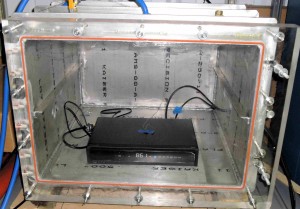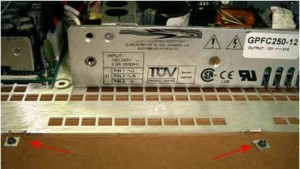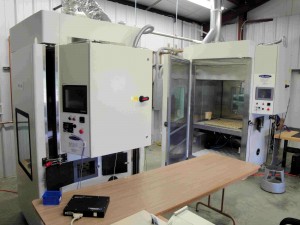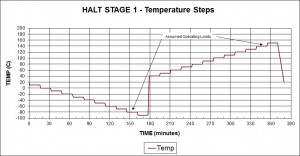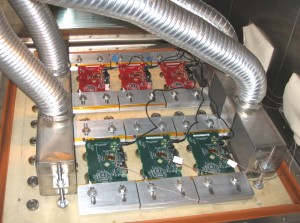Temperature cycling testing is another method of accelerated life testing for products that are exposed to temperature variations during use in normal operation. The temperature variations can be a result of self heating for products that are repeatedly turned on and off, or can be the result of cyclic environmental changes — such as temperature variations from day to night — or other causes.
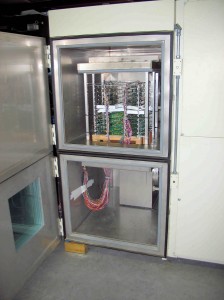 These repeated temperature changes can result in thermal fatigue and lead to eventual failure after many thermal cycles. Accelerated life testing can be performed by cycling the product to high and low temperatures that exceed its normal use temperatures.
These repeated temperature changes can result in thermal fatigue and lead to eventual failure after many thermal cycles. Accelerated life testing can be performed by cycling the product to high and low temperatures that exceed its normal use temperatures.
It should be noted that temperature cycling may also be referred to as thermal cycling or thermal shock testing. However, some test standards, such as MIL-STD-883, make the distinction between temperature cycling being performed as air to air testing and thermal shock being performed with the samples transferred between liquids. This article deals with testing performed using an air to air thermal cycle chamber.
Typical temperature cycling equipment consists of at least one hot chamber and one cold chamber. The test samples are automatically transferred between the two chambers by an elevator-type mechanism. It is also possible to perform temperature cycling in a single compartment chamber where the temperature is ramped between hot and cold. This generally produces a slower rate of temperature change compared to the two chamber method.
Continue reading Temperature Cycling Testing: Coffin-Manson Equation →

